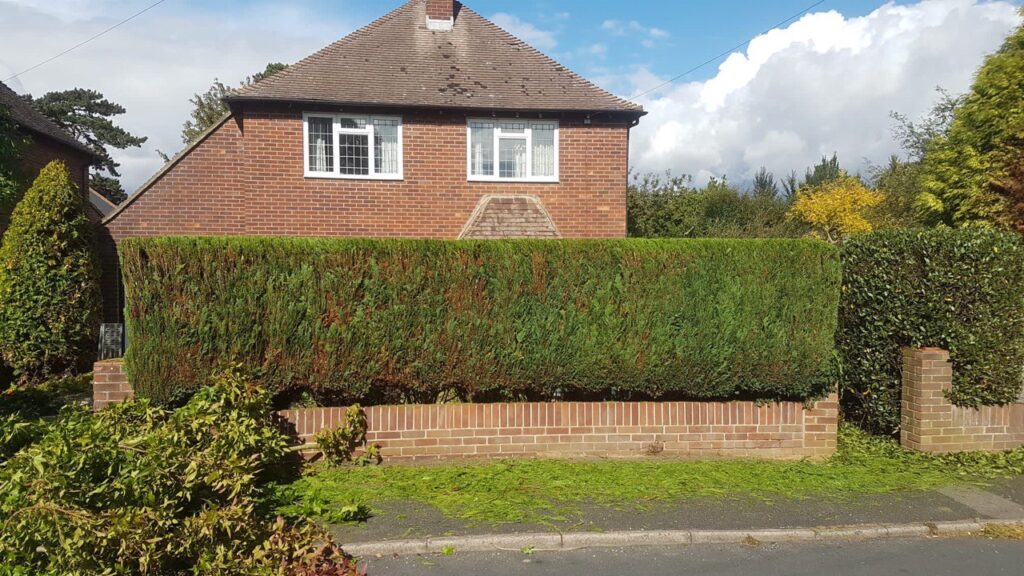Why Crown Reduction Helps Trees Recover from Stress and Damage
Introduction
Trees are not just an aesthetic addition to any landscape; they play a vital role in maintaining the ecosystem and providing beauty and structure to our outdoor spaces. However, like all living organisms, trees can experience stress and damage, whether from environmental factors, disease, or physical injury. While trees are remarkably resilient, certain circumstances can require intervention to ensure their continued health and vitality.
One of the most effective ways to promote recovery and prevent further damage is through crown reduction. Crown reduction is a professional tree surgery technique that involves reducing the size of a tree’s canopy. This practice can help trees recover from stress, damage, and other challenges they may face. In this article, we’ll discuss why crown reduction is essential for the health of trees and how it helps them thrive after periods of stress and damage.
What is Crown Reduction?
Crown reduction is a tree pruning technique that involves selectively cutting back the branches of a tree’s canopy (or crown) to reduce its size. The goal of crown reduction is not just to shape the tree, but to improve its overall health, structural integrity, and resilience. Unlike topping, which is harmful and often leaves the tree vulnerable, crown reduction carefully shortens the branches while maintaining the natural shape of the tree.
This technique is typically carried out by certified tree surgeons who are skilled in making precise cuts that will not harm the tree. By carefully reducing the size of the crown, a tree surgeon can help to restore balance, improve the tree’s ability to receive nutrients, and ensure that the tree can recover from damage.
How Crown Reduction Helps Trees Recover from Stress and Damage
1. Reduces the Weight and Stress on the Tree
One of the main benefits of crown reduction is that it helps to reduce the overall weight on the tree’s branches. Overgrown or damaged branches can place significant stress on the tree’s trunk and root system, especially during adverse weather conditions such as high winds or heavy snow. By reducing the size of the crown, the weight is distributed more evenly, preventing strain on the tree’s structure.
In cases where trees have been damaged by storms, pests, or disease, reducing the canopy can help to alleviate pressure and allow the tree to focus its energy on healing and regrowing healthier branches.
2. Improves Light and Air Circulation
A dense, overgrown canopy can block sunlight and air from reaching the inner parts of the tree, which are essential for healthy growth. In addition to reducing the tree’s size, crown reduction allows light to penetrate deeper into the tree, encouraging new growth in previously shaded areas. This increased light availability can also help to combat fungal diseases and encourage the tree’s natural defence mechanisms.
Improved air circulation helps to reduce the risk of pests and fungal growth, which are more likely to thrive in damp, stagnant environments. By promoting airflow, crown reduction creates a healthier environment for the tree to recover.
3. Promotes Stronger Growth and New Bud Development
Crown reduction helps redirect a tree’s energy towards healthy growth rather than trying to sustain unnecessary or damaged branches. By cutting back older or weaker growth, the tree can focus on producing new shoots and buds. This process rejuvenates the tree and encourages fresh, healthy growth, allowing it to recover from damage or stress more efficiently.
Healthy new growth will also enhance the tree’s appearance, making it more visually appealing and structurally sound.
4. Enhances Structural Integrity
Over time, trees can develop structural weaknesses, especially if they have been exposed to environmental stressors, such as wind, drought, or physical damage. In some cases, weak or unstable branches can cause the tree to become more vulnerable to further damage. Crown reduction helps to remove these weaker sections and redirects the tree’s energy into maintaining a more stable structure.
By maintaining a well-balanced canopy, the tree becomes less prone to breaking or falling during storms, reducing the risk of potential damage to your property.
5. Minimises the Risk of Disease Spread
Damaged or diseased branches can be a significant threat to a tree’s health, as they provide an opportunity for pests and pathogens to enter the tree. Crown reduction removes these problematic areas, preventing disease from spreading throughout the tree. This is especially important if the tree has suffered from fungal infections, rot, or pest infestations, as removing the infected branches is the most effective way to safeguard the tree’s overall health.
In some cases, crown reduction may be part of a larger treatment plan for diseased trees, helping to limit the spread and give the tree the best chance of recovery.
Conclusion
Crown reduction is a powerful and effective tree surgery technique that plays a crucial role in helping trees recover from stress, damage, or disease. By reducing the weight on the tree’s canopy, improving light and air circulation, promoting new growth, and enhancing structural integrity, crown reduction helps trees regain their strength and vitality.
Whether your tree has been affected by adverse weather, pests, or other environmental factors, crown reduction is an essential step in ensuring its long-term health and longevity. With the right care, your tree can flourish once again, adding beauty, shade, and value to your property.
If you’re in the Norwich area and have a tree that requires crown reduction or any other professional tree care, contact The Norwich Tree Surgeons. Our experienced team can assess the condition of your tree and provide expert advice and services tailored to its specific needs. Let us help you maintain healthy, strong trees for years to come.
Call us on: 01603 361 093
Click here to find out more about The Norwich Tree Surgeons
Click here to complete our contact form and see how we can help with your trees needs.

